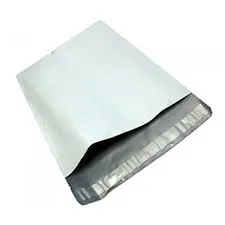brown paper food packaging
The Benefits and Future of Brown Paper Food Packaging
In an age where environmental concerns are increasingly at the forefront of consumer consciousness, the quest for sustainable packaging solutions has become more pressing than ever. Among the various alternatives, brown paper food packaging has emerged as a popular choice. This article explores the benefits of brown paper food packaging, its ecological advantages, and its potential future in the food industry.
Brown paper packaging, often made from recycled materials, offers a host of benefits. One of the most significant advantages is its biodegradability. When discarded, brown paper breaks down naturally over time, returning to the earth without leaving behind harmful residues. This stands in stark contrast to plastics, which can take hundreds of years to decompose and contribute to the ever-growing problem of landfill waste. By using brown paper packaging, companies can play a crucial role in reducing their environmental footprint.
Another compelling reason for the adoption of brown paper food packaging lies in its versatility. Brown paper can be used for a variety of applications, from wrapping sandwiches and pastries to storing bulk items like grains and nuts. Its strength and durability make it suitable for both hot and cold foods, ensuring that the packaging remains intact during transport. Furthermore, brown paper can be easily printed on, allowing businesses to promote their brand while adhering to eco-friendly practices.
In addition to being practical, brown paper packaging is also aesthetically pleasing. The natural, rustic look of brown paper appeals to consumers who appreciate organic and authentic products. This trend has gained traction in recent years, particularly among health-conscious consumers who are increasingly looking for transparency in their food sources. Many brands have capitalized on this desire by using brown paper to convey a sense of purity and quality, thereby enhancing their marketability.
brown paper food packaging

From a health perspective, brown paper packaging is generally perceived as safer than plastic. Concerns about harmful chemicals leaching from plastic into food have driven consumer preference towards more natural alternatives. Brown paper is free from such harmful substances, making it a safer choice for food contact. Furthermore, many brown paper products are made without the use of perfluoroalkyl and polyfluoroalkyl substances (PFAS), which are often present in conventional food packaging.
As society becomes more aware of the environmental impact of packaging waste, the future of brown paper food packaging appears promising. Innovative companies are continuously exploring ways to enhance the performance of brown paper while maintaining its eco-friendliness. For instance, advancements in water and grease resistance technology have allowed brown paper to perform effectively in situations where traditional packaging materials would typically be used. This expansion opens up new avenues for brown paper packaging, allowing it to compete more directly with plastic and other non-biodegradable options.
In addition to advancements in technology, consumer demand will be a significant driving force in the adoption of brown paper food packaging. As more consumers express their preference for sustainable products, businesses will be compelled to adapt their offerings to meet these expectations. Brands that adopt brown paper packaging not only contribute to a healthier planet but also position themselves as leaders in sustainability, which can enhance customer loyalty and brand image.
Despite its many advantages, some challenges remain for brown paper food packaging. Ensuring adequate protection against moisture and contaminants is essential for food safety. However, with ongoing research and development, these hurdles can be overcome, paving the way for wider adoption.
In conclusion, brown paper food packaging represents a reliable, eco-friendly alternative in an era increasingly focused on sustainability. Its biodegradability, versatility, and aesthetic appeal make it an attractive choice for both consumers and businesses alike. As technology continues to advance, and consumer preferences shift towards sustainable practices, brown paper packaging is poised to play a vital role in the future of the food industry, offering a greener pathway for packaging solutions that harmonize with the planet. The transition to this natural alternative is not just beneficial for business; it signifies a commitment to preserving our environment for future generations.
-
The Best Uses for Small Trash Bags in Daily LifeNewsJul.01,2025
-
Stylish Reusable Grocery Bags TrendsNewsJul.01,2025
-
Shipping Advantages of Using Bubble Envelopes BulkNewsJul.01,2025
-
How Compostable Mailing Bags Reduce Environmental ImpactNewsJul.01,2025
-
Environmentally - Friendly Bulk Poly MailersNewsJul.01,2025
-
Eco Friendly Custom Laminated Tote BagsNewsJul.01,2025
-
Have the freedom of customizing your custom mailers any way you want! Our dedicated packaging support will help deliver you the mailing experience you need to elevate your shipping experience to the next level! Start making a strong impression on your customers and stand out from your competitors! -
LIYA uses high quality raw materials which directly purchased from large enterprises domestic and overseas such as PetroChina, Sinopec, Sabic, Equate, ExxonMobil, Dow Chemical, Total, and Borouge, ensuring the price advantage and quality of the raw materials. -
LIYA uses high quality raw materials which directly purchased from large enterprises domestic and overseas such as PetroChina, Sinopec, Sabic, Equate, ExxonMobil, Dow Chemical, Total, and Borouge, ensuring the price advantage and quality of the raw materials.





